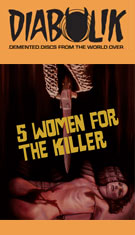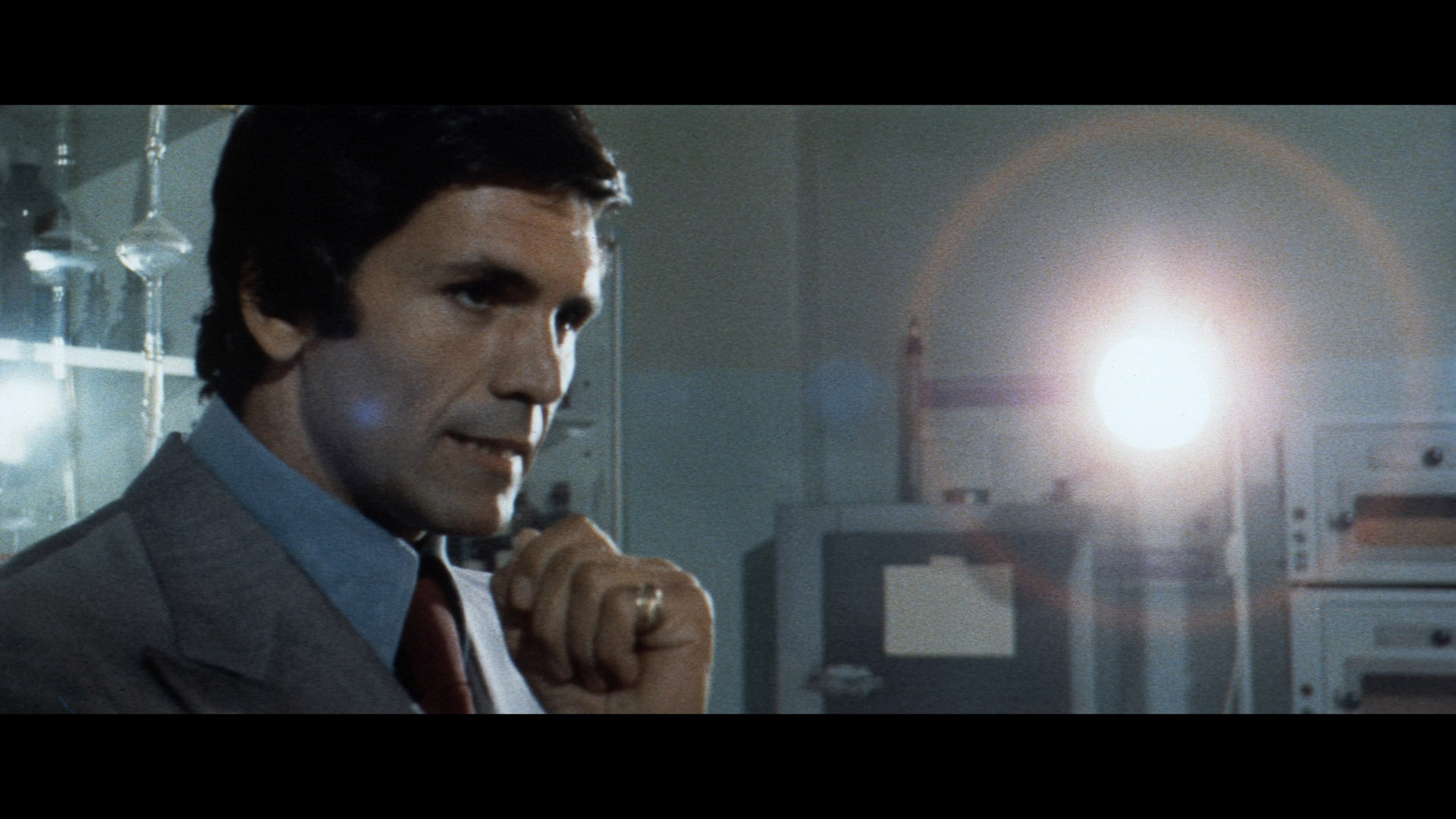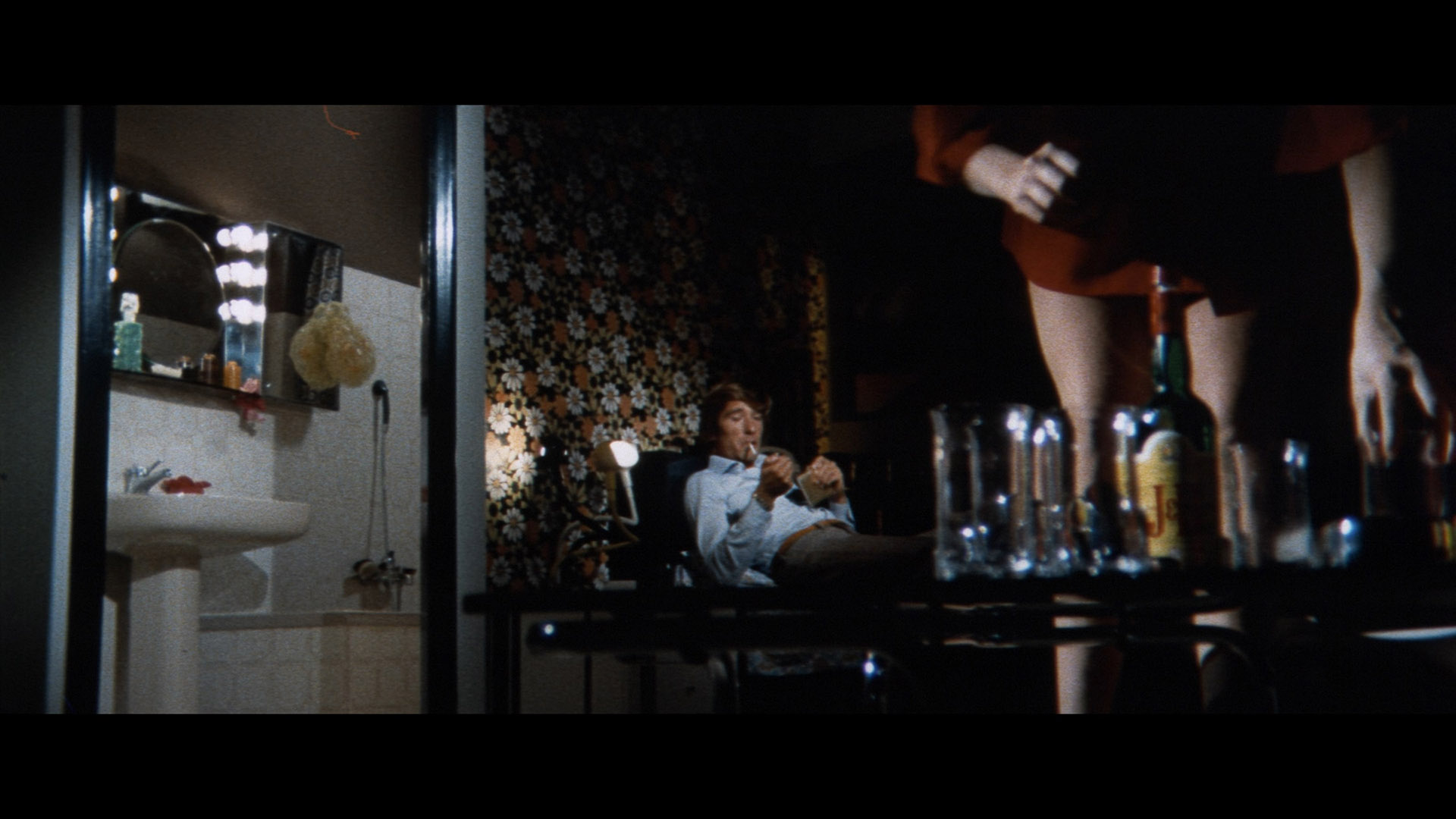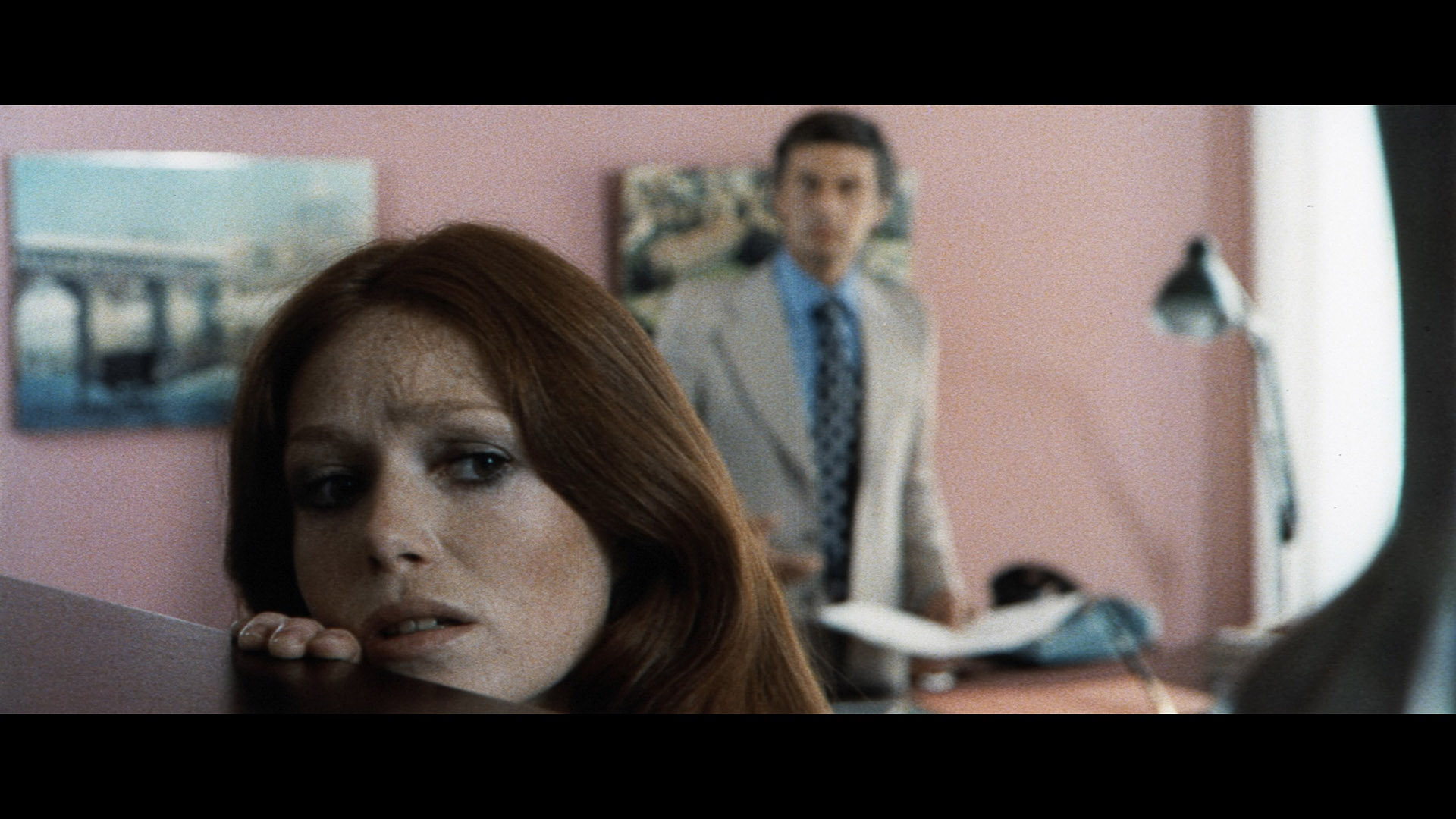



 after the tsunami of gialli that overwhelmed theaters in 1972, the distinctive
after the tsunami of gialli that overwhelmed theaters in 1972, the distinctive  Italian subgenre was already in a swift (temporary) decline by the time 5 Women for the Killer (5 donne per l'assassino) opened with a whimper and found few international takers. The groundbreakers like Mario Bava and Dario Argento seemed to have moved on by this point, and things were getting extra grubby with titles like this, The Killer Reserved Nine Seats, and Girl in Room 2A, as well as many obscurities that never made it outside of Italy at all. This one seemed poised to break out thanks to two big factors: the giallo directorial debut of Stelvio Massi, who had shot The Case of the Bloody Iris and was about to embark on his far more successful run of crime films (Emergency Squad, Destruction Force, Highway Racer, Convoy Busters, etc.), and an international lead in English actor Francis Matthews, a British TV vet and star of Hammer films like The Revenge of Frankenstein, Dracula, Prince of Darkness, and Rasputin the Mad Monk. On top of that the title is an obvious riff on Mario Bava's Sei donne per l'assassino (Six Women for the Killer), better known as Blood and Black Lace, a much bigger hit abroad than at home and arguably the most influential giallo of them all. Instead viewers got a rough, ragged thriller mixing crime procedure with surprisingly extreme imagery of nude murder victims with savage genital mutilation, going way beyond what was implied in What Have You Done to Solange? and paving the way for the grisly extremes yet to come later in later years like Massi's second and last giallo,
Italian subgenre was already in a swift (temporary) decline by the time 5 Women for the Killer (5 donne per l'assassino) opened with a whimper and found few international takers. The groundbreakers like Mario Bava and Dario Argento seemed to have moved on by this point, and things were getting extra grubby with titles like this, The Killer Reserved Nine Seats, and Girl in Room 2A, as well as many obscurities that never made it outside of Italy at all. This one seemed poised to break out thanks to two big factors: the giallo directorial debut of Stelvio Massi, who had shot The Case of the Bloody Iris and was about to embark on his far more successful run of crime films (Emergency Squad, Destruction Force, Highway Racer, Convoy Busters, etc.), and an international lead in English actor Francis Matthews, a British TV vet and star of Hammer films like The Revenge of Frankenstein, Dracula, Prince of Darkness, and Rasputin the Mad Monk. On top of that the title is an obvious riff on Mario Bava's Sei donne per l'assassino (Six Women for the Killer), better known as Blood and Black Lace, a much bigger hit abroad than at home and arguably the most influential giallo of them all. Instead viewers got a rough, ragged thriller mixing crime procedure with surprisingly extreme imagery of nude murder victims with savage genital mutilation, going way beyond what was implied in What Have You Done to Solange? and paving the way for the grisly extremes yet to come later in later years like Massi's second and last giallo,  the
the  outrageously trashy Arabella: Black Angel.
outrageously trashy Arabella: Black Angel. Argento would famously fall out right after this on Deep Red, but his contribution here is one of the film's strongest points
Argento would famously fall out right after this on Deep Red, but his contribution here is one of the film's strongest points  and deserves an accessible soundtrack release someday beyond the scarce and wildly expensive Japanese releases.
and deserves an accessible soundtrack release someday beyond the scarce and wildly expensive Japanese releases.  Howarth covering all the bases here to help you appreciate the film including the backgrounds of all the actors, the state of the giallo at the time, multiple connections to New York Ripper, Massi's
Howarth covering all the bases here to help you appreciate the film including the backgrounds of all the actors, the state of the giallo at the time, multiple connections to New York Ripper, Massi's  background in various capacities, and the traditions established within the giallo by this point. In "My Name Is Howard" (20m11s), Ross (a.k.a. Renato Rossini) looks back at the making of the film, his physically demanding upbringing that led to his strong physique, his stunt work that led to acting via Mario Bava, and his heyday in '70s and '80s film as a variety of strongmen and heavies. In "The Massi Touch" (24m57s), Danilo Massi (son and frequent collaborator of the director) recalls growing up watching his dad at work, the legendary sets he got to experience from Italy's golden era, the influence of Fernando Di Leo, the big impact Emergency Squad had on Stelvio's career, and the working approach that sometimes put him at odds with producers. "Working with Stelvio" (13m24s) features actor Luc Merenda reminiscing about his multiple projects with Massi, starting with The Last Round, as well as his thoughts on playing villains and various memories of the cigar-chomping auteur. In "Five Women for a Giallo" (21m42s), the always gregarious Luigi Cozzi lays out the landscape of the giallo after the turning point of Argento's animal trilogy, the impact wider international exposure had with American theaters proving receptive for a while, and the migration of genre-hopping directors like Massi to the giallo, as well as the impact of pivotal music scores like Gaslini's. Finally in "Cinematographers in Arms" (13m29s), Massi friend and fellow director/cinematographer Roberto Girometti looks at the trend of DOPs turning director at the time (also included names like Massimo Dallamano), the hierarchy of film sets in postwar Italy, the experiences of shooting other projects like newsreels, and his heroes like Marcello Gatti. Also included is a reel of those three fakey gore inserts from the VHS version (1m12s), which really aren't missed in the feature itself.
background in various capacities, and the traditions established within the giallo by this point. In "My Name Is Howard" (20m11s), Ross (a.k.a. Renato Rossini) looks back at the making of the film, his physically demanding upbringing that led to his strong physique, his stunt work that led to acting via Mario Bava, and his heyday in '70s and '80s film as a variety of strongmen and heavies. In "The Massi Touch" (24m57s), Danilo Massi (son and frequent collaborator of the director) recalls growing up watching his dad at work, the legendary sets he got to experience from Italy's golden era, the influence of Fernando Di Leo, the big impact Emergency Squad had on Stelvio's career, and the working approach that sometimes put him at odds with producers. "Working with Stelvio" (13m24s) features actor Luc Merenda reminiscing about his multiple projects with Massi, starting with The Last Round, as well as his thoughts on playing villains and various memories of the cigar-chomping auteur. In "Five Women for a Giallo" (21m42s), the always gregarious Luigi Cozzi lays out the landscape of the giallo after the turning point of Argento's animal trilogy, the impact wider international exposure had with American theaters proving receptive for a while, and the migration of genre-hopping directors like Massi to the giallo, as well as the impact of pivotal music scores like Gaslini's. Finally in "Cinematographers in Arms" (13m29s), Massi friend and fellow director/cinematographer Roberto Girometti looks at the trend of DOPs turning director at the time (also included names like Massimo Dallamano), the hierarchy of film sets in postwar Italy, the experiences of shooting other projects like newsreels, and his heroes like Marcello Gatti. Also included is a reel of those three fakey gore inserts from the VHS version (1m12s), which really aren't missed in the feature itself.![]()